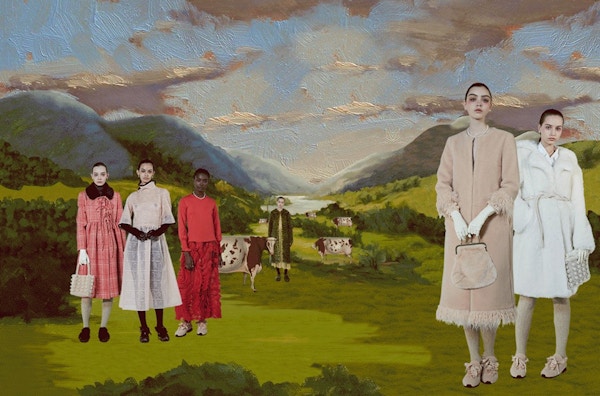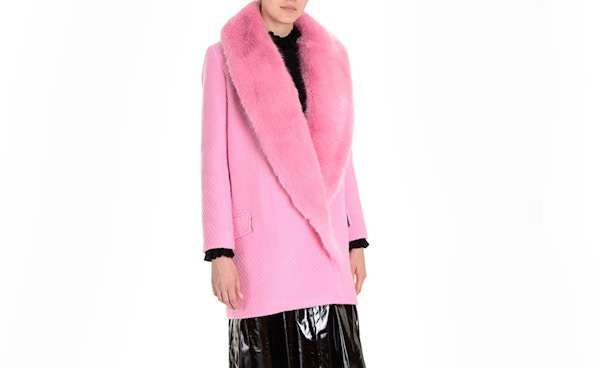
Developments in technology and production, mixed with the ever-increasingly pressure on the fashion industry by PETA, created an exciting gap for a brand to dispel the bad reputation of faux fur in the 1990s.
Shrimps's success got backing from Natalie Massenet, Susie Lau of Style Bubble, Laura Bailey and Alexa Chung. Lily Allen and Kate Moss were early fans, and the brand now has more than 90 stockists.

As with most companies, timing is everything. There are few topics since the famous 1994 supermodel campaign by the People for the Ethical Treatment of Animals (with perhaps the recent exception of Brexit) capable of causing such continuous and divided opinion, or strongly passionate debates between friends..
Now, twenty-three years later, there is no doubt that being socially responsible has become a mainstream topic, and a core value that in some way or another, most consumers and retailers wish to strive for. At the beginning of 2017, Gucci halted the use of Kangaroo fur in its Princetown loafer line, opting to use lamb's wool instead, bowing to pressure from animal rights groups like Peta.

The Yoox Net-A-Porter Group has since announced that it will no longer sell fur on any of its e-commerce platforms, including Net-A-Porter, Mr Porter, The Outnet and Yoox. Labels like Armani and Ralph Lauren no longer use fur – and designers like Stella McCartney made it a key selling point from the outset.
Despite Hannah never having worn real fur, I have heard she doesn’t mind acquiring new fans such as myself, who wish to buy and wear both faux and real. And while browsing the website yesterday (playing with the fun shrimp navigation icon), I started thinking about the four years since this brand launched and her timely success creating a worldwide USP in a crowded luxury fashion market.

I love the AW17 collection. And I’ll be honest, of course I love animals. But I also eat meat. And shoot them. Despite never buying faux fur previously, Shrimps has won me over. I especially love this pink three quarter length Rory coat but it will hang in my wardrobe next to a mink. I suspect I am not alone. Consumers are being pulled in both directions.

While faux fur is an animal-free fashion option, the whole issue around man-made fibres is now under the spotlight and the debate over which option has a higher environmental impact is highly debated.
Last week, Stella McCartney and Ellen MacArthur called for fashion sustainability and radical changes to the "incredibly wasteful" fashion industry.
A report by the Ellen MacArthur Foundation claims half of fashion is disposed of within a year. The amount of clothing bought has doubled in fifteen years, but the number of times an item is worn has fallen by 20%. 50% of the clothes sent for landfill in the UK could be recycled and the foundation says that we could end up eating our own clothes as they re-enter the food chain.

This latest area of concern comes in the wake of the microbeads scandal. When washed, acrylic garments release an average of 1,900 tiny particles of plastic that end up in our seas.
Mike Moser, CEO of the British Fur Trade Association highlights the truth about fake fur’s large environmental footprint. Created from petroleum products and non-renewable plastics, such as nylon, acrylic and polyester that require treating with heat and chemicals. This uses enormous amounts of energy, produces greenhouse gases, ionizing radiation and noxious chemical by-products.
It can take up to ten barrels of oil to make a fake fur coat. Environmentalists are worrying about what will happen to the mountain of unwanted faux fur we are left with each year, as it takes 1,000 years to biodegrade in landfill. Cotton takes only five months to decompose. Real fur, biodegrades naturally within six months to a year, and can even be composted in the garden.

The issue of faux fur is complicated. That's not to say that the production of fur garments isn't without environmental issues. But one thing is for sure. There is nothing ethical about fast fashion.
A Shrimps coat retails from £500 upwards, and may well be a treasured well worn item for a lifetime - but as always where high fashion goes, the high street chains soon follow. This winter, synthetic fur is more widely available than ever, and shops are filled with brighter hues and wilder patterns and textures.

It will be an interesting time ahead for the fashion industry as consumer demand battles with our social consciousness to determine whether in another twenty-three years time we are still having these discussions. I suspect, along with Brexit, we will.
November 2017
Anna Bance of Girl Meets Dress

